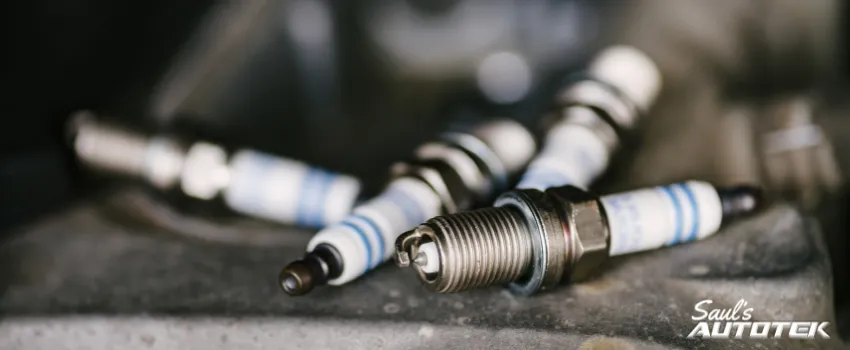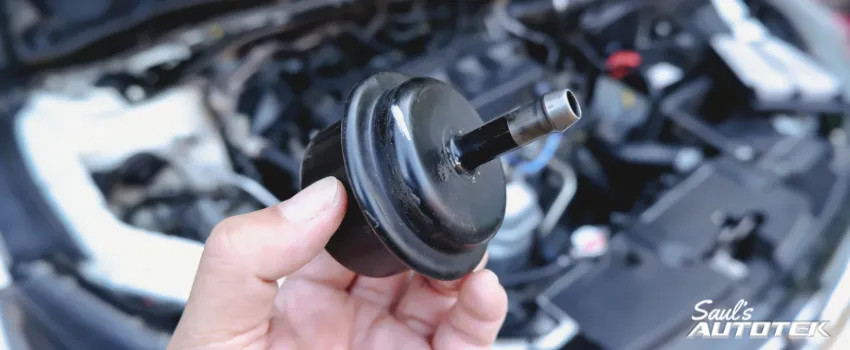Good morning, I’m Saul Reisman here at Saul’s Automotive and today we’re going to talk a little bit about the modern Jeep.
Now, the Jeep that we know was built in World War 2, was designed to be small, lightweight, indestructible, off-road capable, and that was its only intentions. Fast forward 70 years and the same technology is still being applied to these modern Denver vehicles from an off-road prowess standpoint. However, a lot of the engineering aspects have changed to fit modern civilization and keep the mom and pop owners happy and safe. As a result, some of the off-road performance aspects have suffered a little bit and need some addressing. In the case of this 2011 Jeep Wrangler Rubicon Unlimited Four Door, the most popular Chrysler product sold in the world at this moment.
The vehicle itself came from the factory with locking differentials, a disconnecting front sway bar, solid beam axels, 31-inch tires, skid plates. It was a pretty fairly capable off-road machine. However, Jeep Chrysler Corporation built this vehicle stronger than its actual running gear and undercarriage components could handle. The frame of the vehicle was truly designed for the Colorado off-road enthusiast who wanted to modify their vehicle. They wanted to make it bigger, wider, taller, larger in every way. While that is very beneficial for people like me or possibly you who want to make your Jeep bigger, better in every possible shape you can, it also made it a little difficult for some of those that purchase these vehicles new and assumed they were as capable as they once were.
In the case of this Denver vehicle, we’re going to take a look at a few components that got damaged when it went out for some serious off-roading. While the body remains intact, the motor and transmission did survive, basically every drive train component has been broken. While we go through these we’ll be showing you a few different ways we can improve and upgrade these so that you can keep yours on the road longer, safer and wheel it in harder places. We’re going to start by taking a look at the front differential for the vehicle. Inside the front axels assembly which we currently have completely stripped down, the front differential carrier resides in the center. Where this pinion gear rotates from the driveshaft, the carrier sits in two barring halves to rotate and spin both axle shafts. We have both these actual shafts present on the ground in front of us.
They engage on the splines where they slide into this carrier. Now in the case of this vehicle, the axle shafts then pass through the knuckles themselves which is what steers the vehicle side to side. In this pocket, that shaft must bend and twist as a result there are U joints, a universal orbital joint, that we would typically see in a driveshaft or similar configuration to allow rotational motion. However, these U joints are essentially a torque limiting fuse. They’re designed to break under high stress so that other drive train components do not fail. However, the design in which they fail actually causes other seriously detrimental damage. In the case of this vehicle, both front axle shafts snapped in half, both front u joints were ruptured and when this happened, the bearing caps that used to reside here were shattered off of the axle shaft itself, rendering this axle shaft completely useless.
So while the U joint did break and operate as a fuse as it should have, it still caused a $1000 damaged parts on the way. So to prevent this from happening in the future, we’re going to be installing OX brand U joints which are guaranteed for the life of the vehicle, parts, and labor. Additionally, we’re going to be installing chrome molly, 43×40 steel alloy axle shafts. These axle shafts themselves are 40 percent stronger than factory shafts and rather than a factory shaft that would simply crack like a cinder block hitting the ground because it is brittle, these are built from a more durable material that will actually bend like a bumper might if you were to hit it in a car accident. As a result, in the event of a serious calamity like the U joint failing, when that U joint ruptures, rather than breaking the corners off that axle shaft and rendering those ears useless and unserviceable.
The U joint will still fail but the U joint straps those caps themselves may bend a small amount and will be re-shapeable, reusable for the life of the vehicle. Not only will this allow a stronger U joint to be used, increasing that fuse limit and decreasing the frequency of them breaking but this allows them to be serviceable throughout the life of the vehicle. Now the reason that axle shaft broke is even more entertaining. So the way a differential works is it differentiates from one side to the other for power distribution. By the nature of having one input shaft and two output shafts, torque must take the path of least resistance. If power has the option to push uphill or push downhill it will push downhill. If one tire is on dry pavement and one tire is in water the tire that is in water will spin and the one on dry pavement will not.
Rendering even a true four-wheel drive vehicle not very capable in that type of situation. Additionally, when torque transfers from one side of the vehicle to the other very violent forces occur on those U joints. In this case, that’s what caused both axle shafts to get broken because this vehicle was in the air with the front tires rotating. When it came into contact with the ground and that static traction load, that coalition of friction suddenly applied to both those sides, ruptured both U joints, tried to transfer that power across, and broke both those axle shafts. To stop that from happening in the future and to help ensure positive traction from both front wheels we’re installing a lock right locking differential. Inside this rotating carrier that the ring gear bolts to we’ve actually installed a small device that’s a spring-loaded, quad clutch pack driven, pin.
What this will do is instead of letting these two outer gears rotate in opposite directions freely to let torque differentiate on its own, these two clutch packs which are being forced apart with almost a thousand pounds of force will act as a spring clutch and in the event of power being distributed into them will distribute power both directions by forcing these gears apart. However, because there is a spring in here, in the event of a tremendous amount of load being applied to it these springs will give in and let it still ratchet or differentiate as it should. What that translates to is because this is in the front of the vehicle, if the vehicle were on dry pavement in four-wheel drive, with this device installed, and tried to make a sharp turn both front tires must spin at the same rate, at the same time, no matter what.
We know from watching vehicles path through the dirt as it occurs, that the outer tire must physically travel a greater distance and therefore at a higher velocity than the inner tire. This simply isn’t possible with a locking differential. So as a result by building it with an internal spring clutch pack, it allows the vehicle to ratchet freely in hard corners. So that when going in a straight line the vehicle will lock up. Both front tires will have power. 50 percent, 50 percent no matter what but in a hard corner when the throttle is applied and tremendous force goes on this differential it’ll still open up and allow it to move smoothly and therefore safe for a regular driver. This way you can rest assured that not only are you getting more traction to the ground but you are doing it safely and in a way that won’t damage other components.
By using a locking differential like this we’re able to guarantee that both those actual shafts get an equal load at all times. Installing this will not only increase the amount of traction the vehicle is getting to the ground but will decrease the likelihood of further component failures. So we are going to be installing this lock right locking differential, alloy USA 43×43 chrome alloy axle shafts, and OX U joints into this front axle. To essentially make it as bulletproof as it can be. The next logical upgrade would be physically removing and replacing the entire axle assembly itself. While that is something that can cost $4-5-6,000 or more these kinds of components can be installed one at a time, are cost-effective, and are typically significantly less expensive than complete axle swaps.
If you have any concerns about the front axle in your Jeep and how to best get the most power and liability out of it, and how to keep the strength in it, please give us a call 303 919 7769 at Saul’s Automotive.
We would be happy to show you the current condition of it, how we can help you, what possible upgrades are out there, and how to plan your budget accordingly so you get the vehicle you want for the price you deserve. Please give us a call at 303-919-7769. Thank you.
Schedule Your FREE diagnostic Subaru Outback Auto Repair Upkeep and Repair Appointment
Check out Our Reviews On Yelp! And Leave A Great One For Us!
Join Our Conversation on Facebook
Explore Our Exceptional Denver Auto Repair Services
- Brake Repair Service
- Suspension Repair
- Steering Repair
- Engine Repair
- Automotive Air Conditioning and Heating Repair





